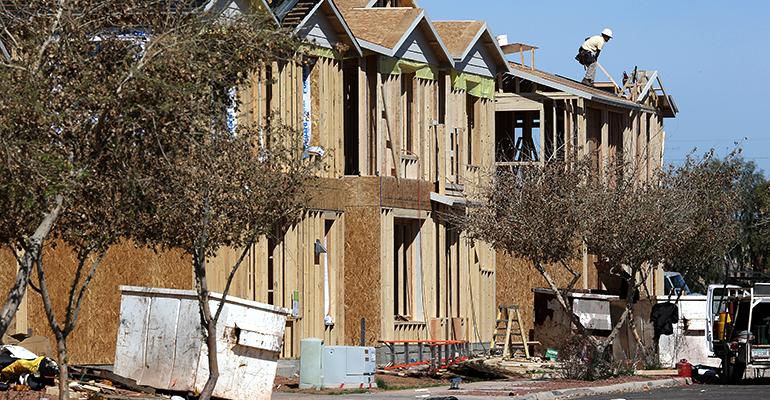This cycle differs from others not only in its seemingly endless yet tepid longevity, but importantly in its role in deepening the divide between the haves and the have-nots. Increasingly, in the years since the global financial crisis, the heart of the U.S. workforce has been priced out of affordable housing. In this context, the private sector, particularly in thoughtful partnership with non-profits, emerges as significantly better equipped to address the dire need for quality, affordable housing than the public sector or capitalistic market forces.
Since 2009, the U.S. has addressed the housing needs of two subsets of the population: those earning more than 100 percent of Area Median Income (AMI) who can afford new class-A luxury rentals, as well as those earning below 60 percent of AMI who are supported by government-subsidized programs such as Low-Income Housing Tax Credits (LIHTC) and Section 8 housing. The population in the middle, which makes up the vast majority of our teachers, healthcare workers, policemen, firemen and other hard-working members of the U.S. workforce, has been completely ignored in the process and increasingly suffers the financial and social consequences of insufficient affordable housing.
Sixty-two percent of renter households earn below 80 percent of AMI, with 12 million American families spending more than 50 percent of their household income on rent. At the same time, higher regulatory and construction costs in this cycle combined with “Not in My Back Yard” challenges have resulted in developers building virtually exclusively luxury housing. Furthermore, as real estate values rise, market-rate players acquire previously affordable stock and drive up rents so as to justify tight acquisition capitalization rates.
Meanwhile, government subsidized tax credit programs do not address the needs of the “bread and butter” of the U.S. workforce, who earn more than 60 percent of AMI. These programs are under severe pressure, with only 24 percent of extremely low-income renters able to secure subsidized housing. Current tax reform could exacerbate this lack of supply further by driving down the value of tax credits and curtailing tax-exempt financing. These factors combined could potentially result in a loss of nearly 1 million affordable rental housing units over the next 10 years.
In this context, where both “the market” and the government fall short, a thoughtful private sector solution that focuses on the preservation and rehabilitation of quality affordable housing for the U.S. workforce, combined with robust social and community programming, emerges as a powerful solution. By leveraging its operating scale, an experienced multifamily owner-operator is able to address both the housing and livelihood needs of households earning below 80 percent of AMI, who require particular help during this cycle.
A well-crafted preservation and rehabilitation strategy increases the longevity, safety and attractiveness of old or out-of-date exteriors and unit interiors, while maintaining affordable rents. Green initiatives also promote a responsible and positive environmental footprint, while improving efficiency, sustainability and costs.
Most importantly, by partnering with non-profits dedicated to advancing social mobility and improving the lives of residents, a private sector solution can create thriving communities far beyond just “four walls and a roof.” This, in turn, drives higher occupancy and value for all stakeholders.
Companies that deliver quality programming with full-time staff in specially built on-site social and community centers, such as Project Access and NeighborWorks, magnify the impact quality housing can have on our workforce. This is especially true if these programs are held to high accountability standards with specific benchmarking and goals.
For example, in collaboration with on-site non-profit partners, a workforce and affordable housing owner-operator can measure what percentage of children leveraging after-school tutoring programs improve their academic performance year-over-year. For adults, measurement may include the percentage of residents who credit the center with helping them achieve a significant life-enhancing goal, such as mastering English as a second language, technical training, career counseling, health education or building a credit history.
A successful private-non-profit partnership enhances the lives of residents, while also providing a poignant and impactful form of corporate philanthropy. By addressing the unmet housing, social and community needs of a large and growing segment of the priced-out and ignored U.S. workforce, a private sector owner-operator is able to achieve the so-called “double bottom line” of creating meaningful impact while also driving strong, stable cash flows and returns to investors.
These returns are also supported by government agencies, including Freddie Mac and Fannie Mae, for whom the affordable housing crisis presents a direct challenge to their mandate of supporting the U.S. multifamily sector. In fact, these agencies have recently partnered with select private sector real estate owner-operators to implement innovative and flexible affordable housing financing solutions at scale, providing a way to make substantial renovations while preserving affordability and investor returns. Many public city workers are required to live within city limits, yet are increasingly priced out.
Ultimately, as wealth inequality persists and continues to grow, and housing becomes increasingly bifurcated, a private sector solution with operating heft and experience in building thriving communities can accomplish what the government and the “invisible hands of the market” cannot.
Inna Khidekel serves as managing director at Bridge Investment Group, a real estate investment management firm and owner-operator that focuses on value-add investing in specialized sectors of the U.S. real estate market, including a dedicated workforce and affordable housing strategy.

